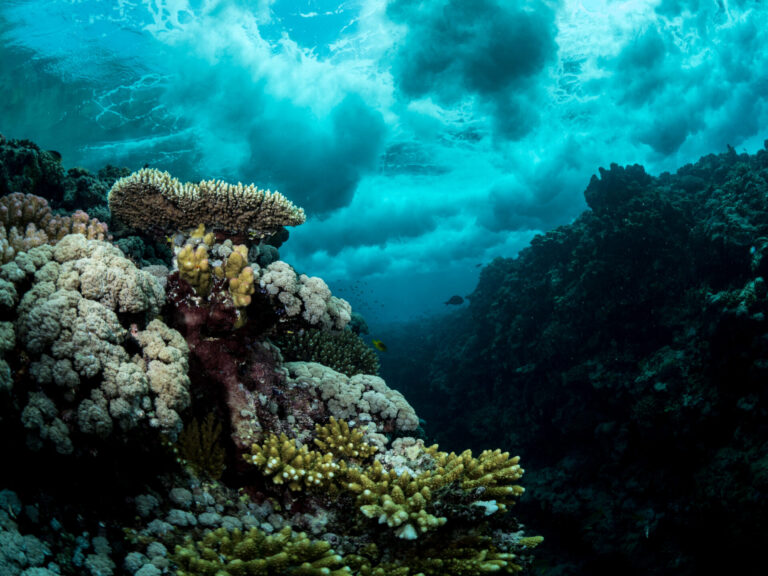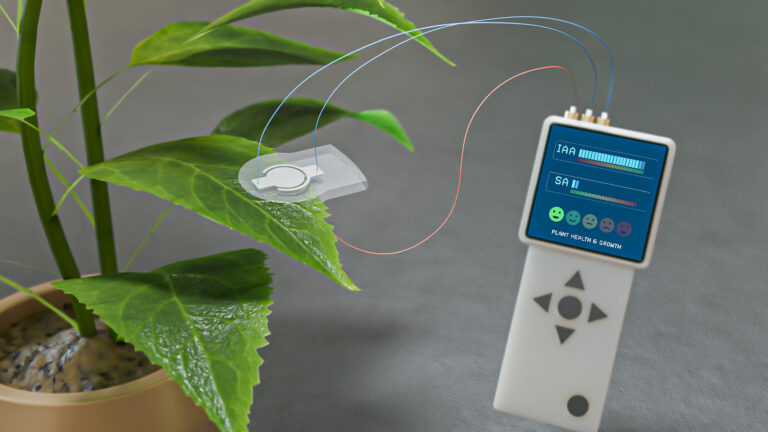Electrical Engineering | Marine Science
“Marine Skin” dives deeper for better monitoring
A pioneering tagging system that monitors the movement and local environment of sea animals reaches deeper depths and higher sensitivities.

A new and greatly improved version of an electronic tag, called “Marine Skin,” used for monitoring marine animals could revolutionize our ability to study sea life and its natural environment, say KAUST researchers.
Marine Skin is a thin, flexible, lightweight polymer-based material with integrated electronics that can track an animal’s movement and diving behavior and the health of the surrounding marine environment. Early versions of the sensors, reported previously, proved their worth when glued onto the swimming crab, Portunus pelagicus.
The latest and much more robust version can operate at unprecedented depths and can also be attached to an animal using a noninvasive bracelet or jacket. This can, when necessary, avoid the need for any glues that might harm an animal’s sensitive skin.

The new version of Marine Skin shown attached to a sea bream.
© 2019 KAUST
“The system can now operate down to a depth of 2 kilometers, which has never been achieved before by anyone,” says Ph.D. student Sohail Shaikh of the KAUST team.
The sensitivity of the monitoring electronics has also been enhanced by up to 15 times. The data collected reveals a tagged animal’s depth and the temperature and salinity of the surrounding water. Further development is planned to incorporate additional environmental sensing capabilities, such as measuring oxygen and carbon dioxide levels and precise geolocation tracking.

The new version of Marine Skin is half the size of the previous version and robust enough to tolerate operating up to 2 kilometers below sea level.
© 2019 KAUST
Shaikh reports that a major challenge in developing the enhancements was to make the system sufficiently robust to tolerate operating at much greater depths. The researchers also managed to reduce the size down to half that of the previous version. Tests also showed improved performance, flexibility and durability when the skin was attached to different fish, including sea bass, sea bream and small goldfish. Lab tests in highly saline Red Sea water also demonstrated integrity through a full month’s immersion and 10,000 extreme bending cycles.
“Marine skin is a unique and groundbreaking innovation in wearable technology for marine animals,” says Muhammad Mustafa Hussain, whose research group has developed the system in collaboration with Carlos Duarte’s group, also at KAUST.
Hussain adds that Marine Skin outperforms all existing alternatives while emphasizing that ongoing development work will continue to enhance the sensing capacities, overall performance, reliability and affordability.
References
-
Shaikh, S.F., Mazo-Mantilla, H.F., Qaiser, N., Khan, S.M., Nassar, J.M., Geraldi, N.R., Duarte, C.M. & Hussain, M.M. Non-invasive featherlight wearable compliant “Marine Skin”: Standalone multisensory system for deep-sea environmental monitoring. Small 15, 1804385 (2019).| article
You might also like

Bioengineering
Smart patch detects allergies before symptoms strike

Computer Science
Green quantum computing takes to the skies

Marine Science
A place to trial hope for global reef restoration

Marine Science
Reef-building coral shows signs of enhanced heat tolerance

Marine Science
Plastic-munching bacteria found across the seven seas

Electrical Engineering
Micro-LEDs boost random number generation

Marine Science
AI reveals the universal beauty of coral reef growth

Bioengineering




